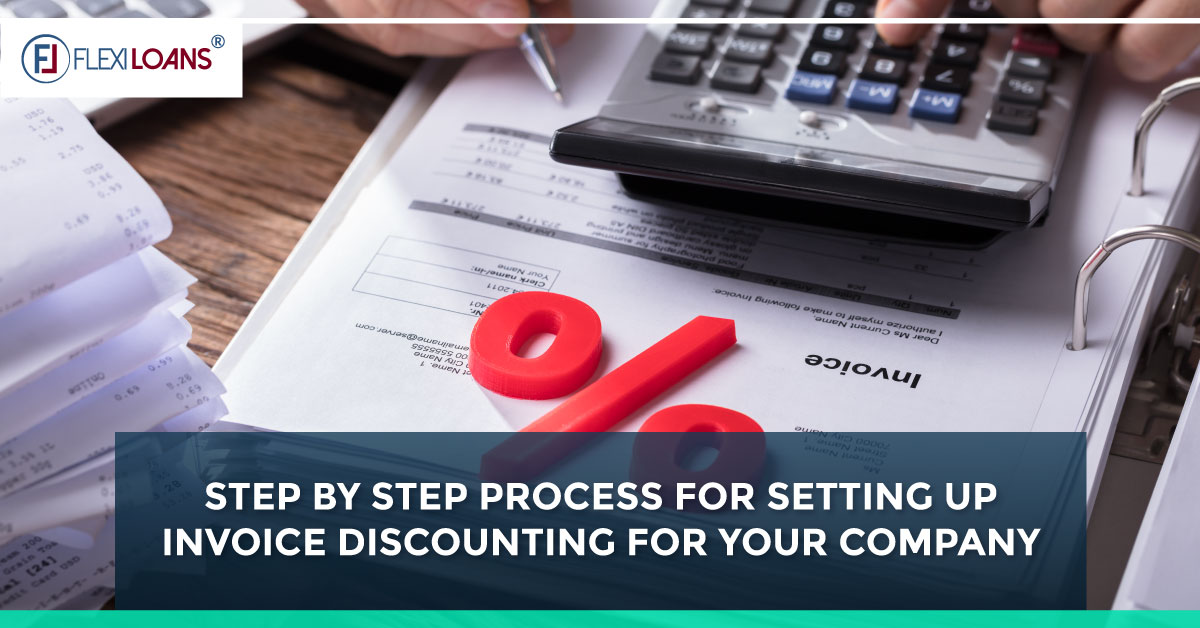Aug 03, 2017

An abundance of working capital is essential for every business that wishes to maintain ongoing business operations and develop sustainably. The interruption created by COVID-19 spotlighted the importance of working capital. Many businesses suffered due to the lack of cash on hand.
As businesses are trying to recover from financial losses and reset their growth trajectory, maintaining a good cash flow has become essential. Increasing the transition of invoices to cash is among the easiest methods to support day-to-day operations. Unfortunately, businesses sometimes hoard cash as they wait to dispose of their receivables. Innovative finance options such as invoice discounting are an alternative option for getting funds.
What is Invoice Discounting?
The invoice or bill discounting process is a form of short-term borrowing extended by a lender or a bank to its customers based on unpaid invoices. This process intends to meet the short-term liquidity needs of the company. The whole period could go on for as long as 90 days.
It is a financial product that can be used instead of a business loan in India or overdraft facility. Under invoice discounting, the business distributes unpaid bills to banks or financial institutions in exchange for up to 90% of the bill’s outstanding value.
Bill Discounting or Invoice Discounting Process
Invoice discounting is something which is provided by a lot of lenders. This implies that the money which is in flow will get to you instantly. This is irrespective of how long would it take the customer to actually pay up the invoice. This could also form collateral and collateral free loans.
Generally, lenders do not supply the amount which is directly equal to the value of the invoice. The percentage ranges from 75% to 90%. The customer pays up for the invoice; the remaining sum will be compensated. The interest rate at which the lenders to provide it varies from 1.5% to 3.0%.
A quick process of invoice financing explained:
Step 1: You take the invoice provided to your customer and take it to a discounter (for example – FlexiLoans) within 24 hours, and they pay you a certain amount of money ranging from 75% to 90% of the invoice.
Step 2: You control all the sales management, cash inflow, and the management of business and customers.
Step 3: The remaining balance is left on the invoice; you will receive it once the company collects the debt from the purchaser.
How will Invoice Discounting Benefit Your Business?
Invoice discounting improves your cash flow, particularly if you have clients who do not pay on time. A good cash flow is essential for running a business smoothly. Further, you should benefit from a more consistent revenue source when using an invoice discounting service. This simplifies company strategy and prediction, allowing you to capitalize on fresh investment possibilities.
The funds obtained via invoice discounting can be utilized in various ways: to hire temporary personnel at the peak season, to purchase more goods or raw materials, to weather a difficult trade time, etc. Now let us look into the advantages of invoice discounting:
– Availability of cash on hand
Invoice discounting shortens the working capital cycle and provides immediate access to money, assisting businesses in maintaining a constant state of operations. Occasionally, the waiting period for obtaining cash is as short as 48 hours.
This immediate access to cash may be utilized for several purposes, including acquiring raw materials, collecting utility and operating expenditures, rewarding personnel for their contributions, and payment terms of vendor invoices. The liquid cash on hand may be used to stabilize operations and propel the firm forward.
– Business expansion
By giving access to credit, invoice discounting can assist you in growing your firm. Whenever working capital is accessible to maintain a stable cash flow, firms may quickly capitalize on new possibilities.
For instance, suppose a business has just completed a large order for which payment is due in a couple of months. The corporation receives another order but needs raw supplies to fulfill it. Funding through invoice discounting might pump money into the firm, allowing it to seize this fresh opportunity that it might otherwise have due to a lack of capital.
As firms attempt to achieve pre-COVID levels of performance in 2021, they must not skip out on any growth possibilities. Discounting invoices can assist businesses in capitalizing on growing demand and meeting growth ambitions.
– No-collateral facility
Invoice discounting is a type of unsecured company credit based on the supply company’s strength. As a result, a corporation can obtain money without pledging collateral.
This is a godsend for small enterprises with minimal resources to hypothecate. Businesses can avoid being trapped in a debt trap by releasing their assets from mortgages. Rather than that, they may use the resources to achieve long-term funding and future growth.
– Multiple bankers at your disposal
2021 will be unlike any other year, as firms across various industries, mainly banking services, attempt to rebound from last year’s decline. Accessibility to numerous banking firms at such exceptional times can assist firms in diversifying their sources of funding and ensuring funds are available when required most.
Furthermore, access to different financing institutions via invoice finance enables firms to choose the lender offering the most favorable terms and conditions.
Features of Invoice Discounting
Invoice discounting is a one-of-a-kind method of obtaining immediate operating cash for a company. The following are the facility’s unique features.
| Transaction | Financing against outstanding invoices |
| Ownership | The bills remain the property of the entrepreneur or firm |
| Collection | The entrepreneur or firm bears the burden of collecting |
| Funds received | Up to 90% of the outstanding invoice amount |
| Collateral | No collateral security is required |
Invoice Financing Example
For instance, Mr. A provides an invoice to Mr. B of Rs. 10,000, and then Mr. A goes to FlexiLoans (a financial institution) and gets an invoice discounted up to 90%. FlexiLoans will then pay him Rs. 9,000. The remaining amount stays outstanding till the customer compensates for the invoice. In the whole process, the 1000 Rs. is seen as invoice discounting.
Methods of Invoice Discounting
Invoice Discounting is available in two forms:
- Invoice Discounting with Recourse: Under this procedure, banks or financial institutions verify the entrepreneur’s or business’s documents and forward them to the seller’s bank. In the event of a default, the entrepreneur or company is responsible for the bad debts.
- Invoice discounting without Recourse: This strategy eliminates the need for banks or financial institutions to verify documents. Additionally, in case of bad debts, the banker or lender bears the collection burden.
Invoice Discounting Rates and Fees
The following is a broad description of how charge structures work:
1. Advance/processing fees
These are one-time charges that lenders frequently charge for arranging the loan (a comparable example is an origination fee on something like a term loan for business). This is approximately 3% and is deducted from the remaining 10% to 15% collected when your debt is repaid.
2. Weekly factor fee
The cost of invoice financing is generally calculated weekly, based on the length of time your invoice remains unpaid after you accept the loan. This may range from 0.5% to around 3% per week.
As previously stated, you will not be required to make weekly payments on the invoice you finance. Rather than that, you must pay your debt when your customer pays you. You will not be required to provide extra security because the invoice acts as security for the loan.
Invoice Financing Process
The first stage is to determine whether to discount your complete receivables ledger, a process known as full turnover invoice discounting. Instead, you might discount only a subset of specific invoices, a practice known as selective invoice discounting. Keep in mind that particular invoice discounting may not always be viable for smaller enterprises. It’s because invoice discounting providers seek to diversify their risk among as many customers as possible.
- After determining, call multiple invoices discounting companies and compare their services and rates.
- Request recommendations from their customers whenever feasible.
- They will most likely be anonymous, but they may still be beneficial in helping you decide in which firm to utilize them.
- Consult your accountant before making a decision.
- Once you’ve picked an invoice discounting business, they’ll walk you through the procedure. This involves initiating payments to you, establishing a trust account for customer payments if necessary.
Conclusion
Invoice discounting has several advantages that might help you build your business. At FlexiLoans, we have established agreements and ties with a diverse range of purchasers to ensure that you receive capital for your business on time. Our platform enables companies and their vendors to get operating cash more quickly hence assisting in development and expansion.







